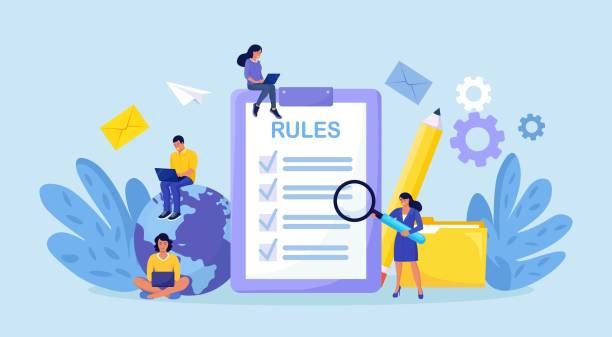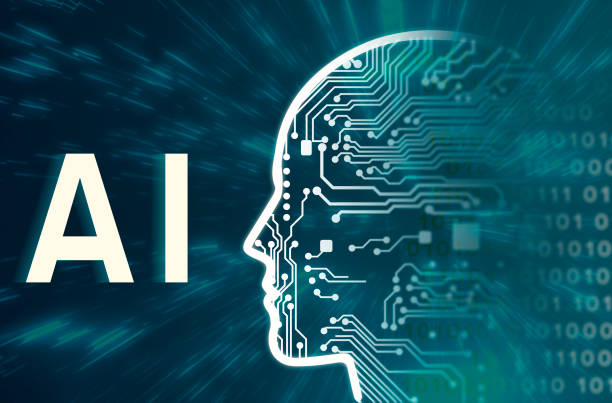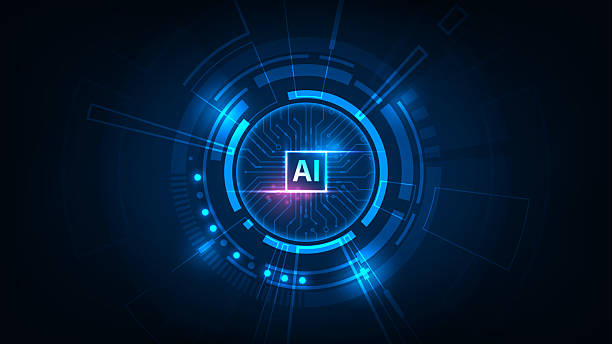An Introduction to the Importance of Website Design with Modern User Interface
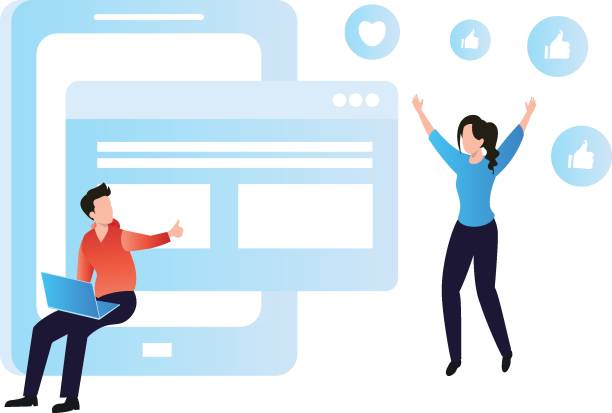
In today’s world, where online competition has peaked, website design with a modern user interface is no longer a luxury choice but a vital necessity for the survival and growth of any online business.
#WebsiteImportance, #UserInterface (UI), and #UserExperience (UX) are key factors that not only help attract an audience but also play a fundamental role in maintaining their loyalty.
An outdated website with difficult usability quickly disappoints users, causing them to move towards competitors with a better user experience.
This is especially crucial for new businesses looking to build a strong and lasting #brand.
Today, users have higher expectations for their digital interactions.
They seek a smooth, visually appealing, and efficient experience.
These expectations include high loading speed, full compatibility with various devices (mobile, tablet, desktop), and easy navigation.
Website design with a modern user interface means a deep understanding of user needs and behaviors to deliver a digital product that is not only beautiful but also functional and reliable.
Investing in this area means investing in the future of your business and ensuring sustainability in a competitive market.
This analytical approach shows how User Interface (UI) and User Experience (UX) have become the main pillars of digital success, and ignoring them can lead to failure.
From an SEO perspective, websites with good user interfaces and high loading speeds achieve better rankings from search engines like Google.
This means more visibility and attracting more organic traffic.
Therefore, website design with a modern user interface is not just limited to visual aesthetics; it is a powerful tool for business growth and achieving commercial goals.
In the following sections, we will delve into more details on the principles and methods of achieving an excellent user interface.
Did you know that 94% of a first impression of a company is related to its website design?
RasawWeb, by providing professional corporate website design services, helps you create the best first impression.
✅ Create a professional and trustworthy image for your brand
✅ Easier attraction of potential customers and improvement of online presence
⚡ Get free corporate website design consultation
Key Principles of User Experience (UX) in Modern Design

User Experience (UX) is the heart of every website design with a modern user interface and goes beyond just the visual aesthetics of a website.
This concept refers to the entire journey and emotions of the user when interacting with a digital product.
#User_Centricity, #Usability, #Accessibility, and #Information_Architecture are vital UX principles.
To create an outstanding user experience, the first step is a deep understanding of target users.
This includes researching their needs, behaviors, goals, and pain points.
By creating user personas, we can simulate real scenarios and shape our design based on them.
One of the most important aspects of modern UX is simplicity and intuitiveness.
Users should be able to easily find what they are looking for and complete their tasks without confusion.
This requires a logical and clear Information Architecture that organizes content hierarchy effectively.
Also, providing appropriate feedback to the user during interactions, such as when submitting a form or clicking a button, is crucial.
This feedback can be visual or textual, assuring the user that their action was successful or needs correction.
Guiding the user through clear paths and preventing dead ends ensures a smooth and satisfying experience.
Finally, Accessibility is another cornerstone of UX that is often overlooked.
A modern website should be usable by everyone, including people with disabilities.
This includes providing alternative text for images, appropriate color contrast, keyboard navigation, and compatibility with Screen Readers.
Adhering to these principles is not only a social responsibility but also increases the website’s potential audience.
By focusing on these educational principles and guidelines, a strong foundation can be built for a successful website design with a modern user interface that prioritizes user satisfaction.
The Role of User Interface (UI) in Audience Attraction and Aesthetics
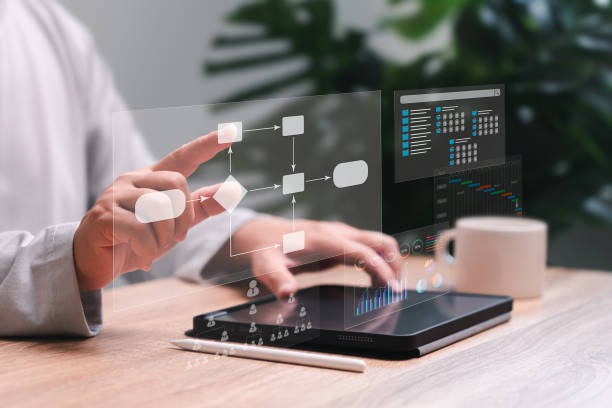
While User Experience (UX) deals with the overall feel of the user, #UserInterface (UI) is the visual and interactive part of the website that the user directly interacts with.
Aesthetics, element arrangement, color selection, typography, and button design all fall under UI.
An attractive and professional UI not only draws users to your website but also encourages them to spend more time on it and have a positive feeling towards your brand.
#VisualDesign in website design with a modern user interface is as crucial as functionality, as the first impression of a website is often formed based on its appearance.
Visual elements such as Whitespace, balance, contrast, and alignment play a significant role in creating a clean and pleasant UI.
Choosing an appropriate color palette can evoke specific emotions in the user and reinforce your brand message.
For example, warm colors typically convey a sense of energy and excitement, while cool colors are more calming.
Typography (the selection of fonts and their sizes) also impacts readability and the website’s character.
A suitable font can make content more engaging and easier to read.
This section explains how UI is a key factor in establishing a strong and recognizable brand.
A unique and consistent UI across all pages builds user trust and demonstrates the professionalism of your business.
In the table below, we compare the features of traditional and modern user interfaces to better understand the key differences and highlight the importance of website design with a modern user interface:
| Feature | Traditional User Interface | Modern User Interface |
|---|---|---|
| Visual Design | Complex, cluttered, limited templates | Simple, minimalist, content-focused, subtle animations |
| Navigation | Nested menus, unclear | Intuitive, easy access, use of familiar icons |
| Responsiveness | Often non-responsive or desktop-only | Fully responsive for all devices |
| User Interaction | Static, limited feedback | Dynamic, micro-interactions, visual and auditory feedback |
| Loading Speed | Slower due to unoptimized coding | Optimized for speed, use of modern techniques |
Responsive Design and User Experience Across Different Devices

In the current era, users access the internet using a wide variety of devices; from small smartphones to tablets and wide desktop monitors.
This unparalleled diversity has doubled the importance of #ResponsiveDesign in website design with a modern user interface.
A responsive website automatically adjusts its layout and elements to the user’s screen size to provide the best possible visual and user experience on any device.
This means there’s no longer a need to design separate mobile and desktop versions, which saves both time and cost and makes maintenance easier.
The “Mobile-First” approach, which has become very popular in recent years, is a key strategy in responsive design.
In this approach, design is first done for the smallest screen (usually mobile) and then gradually expanded for larger screens.
The reason for this approach is that designing for mobile forces designers to focus on the most essential content and functionalities, preventing clutter and information overload.
This thinking helps create a cleaner and more efficient user experience for all devices.
From an SEO perspective, Google and other search engines give higher scores to websites that provide a good mobile experience.
Key elements in responsive design include the use of Flexible Grids, Scalable Images, and Media Queries in CSS.
These techniques allow layout, font sizes, and even the display of certain specific elements to change based on screen dimensions.
The ultimate goal is to provide a seamless and optimized user experience, so that whether the user is on their mobile phone on a bus or on a laptop at home, they can easily interact with your website.
This specialized and informative aspect of website design with a modern user interface shows how new technologies have revolutionized the way we interact with the web and highlights the need for continuous updates of knowledge and skills.
Tired of losing business opportunities due to not having a professional corporate website? Worry no more! With RasawWeb’s corporate website design services:
✅ Your brand’s credibility and professionalism will increase.
✅ You will attract more customers and sales leads.
⚡ Get a free consultation now to start!
Loading Speed and Performance Optimization in Modern Websites

In today’s fast-paced world, website loading speed is of crucial importance and is considered one of the main pillars in website design with a modern user interface.
#WebsiteSpeed not only directly impacts #UserExperience but also significantly affects the site’s ranking in search engines (SEO).
Research has shown that even a one-second delay in page loading can lead to a significant decrease in conversion rates and an increase in Bounce Rate.
Users expect websites to load immediately, and if this is not met, they quickly turn to competitor websites.
Website performance optimization includes a set of analytical and technical techniques aimed at reducing page loading time.
One of the most important methods is image optimization.
High-volume images can severely slow down loading speed.
Using appropriate image formats (such as WebP), compressing images without noticeable quality loss, and employing Lazy Loading for images can have a significant impact.
Lazy loading means that images and videos are only loaded when they are within the user’s viewport, preventing unnecessary resource loading at the initial stage.
In addition to images, optimizing HTML, CSS, and JavaScript codes is also very important.
Minification of these files by removing extra characters and whitespace can reduce their size.
Using a CDN (Content Delivery Network) also improves access speed by storing copies of the website on servers closer to users.
Regular database maintenance, content caching, and using robust hosting are other effective solutions in this area.
By implementing these guidelines and specialized techniques, website performance can be significantly improved, ensuring that your website design with a modern user interface possesses the necessary speed and efficiency in addition to aesthetics.
The Importance of Content and Interactivity in Modern UI Website Design

No website design with a modern user interface, however beautiful and fast, can reach its full potential without engaging #content and effective #interactivity.
Content is king, and within the framework of good UI/UX, this kingship gains more power.
Content not only conveys information to the user but also builds emotional connection and trust.
#Quality_content, including readable texts, high-quality images, engaging videos, and informative infographics, helps users meet their needs and achieve their goals on the website.
One of the key aspects of content in website design with a modern user interface is its Scannability.
Users typically don’t read web pages word-for-word but rather scan them quickly to find the information they need.
Using clear headings, short paragraphs, bulleted lists, and ample whitespace helps improve content readability and scannability.
Additionally, the Call-to-Action (CTA) should be clearly designed and guide the user towards the next action, whether it’s purchasing a product, signing up for a newsletter, or downloading a file.
In addition to content, Interactivity plays a vital role in user retention and increasing their engagement.
#Micro-interactions, such as a button changing color when hovered over, subtle animations during page loading, or displaying small confirmation messages, can make the user experience more enjoyable and entertaining.
Interactive forms, surveys, small content-related games, and comment/Q&A sections all contribute to increased interaction.
This educational and entertaining approach helps designers think beyond mere aesthetics, towards dynamism and bringing life to the website.
Creating an engaging content flow and enabling meaningful interactions are integral parts of an effective website design with a modern user interface.
Modern Tools and Techniques in User Interface Development
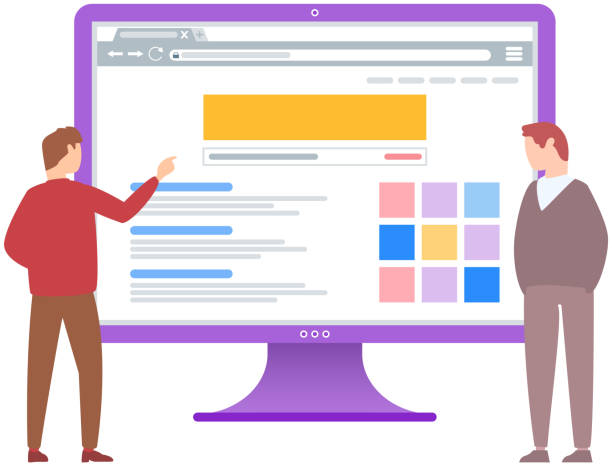
To implement an efficient website design with a modern user interface, familiarity with modern web development tools and techniques is essential.
#DesignTools like Figma, Sketch, and Adobe XD allow designers to create interactive prototypes, simulate user flows, and gather stakeholder feedback.
These tools, with their team collaboration capabilities and component libraries, accelerate the design process and ensure visual consistency.
Using these tools during the design phase significantly helps reduce potential errors during the development phase and increases team productivity.
After the design phase, it’s time for implementation and development.
Front-end frameworks such as React, Vue, and Angular play a pivotal role in building dynamic and complex user interfaces.
These frameworks, by offering reusable components and State Management, make development faster and coding more organized.
Using Design Systems also helps maintain consistency throughout the project and ensures that all UI elements adhere to a specific standard.
This specialized approach not only reduces development time but also enhances the final product’s quality.
One of the important techniques in evaluating and improving UI/UX is User Testing and A/B testing.
User testing allows us to test the website with real users and identify design strengths and weaknesses from their perspective.
A/B testing also compares two different versions of an element (such as button color or CTA text) to determine which version performs better.
Tools like Hotjar and Google Analytics help collect quantitative data (such as click-through rates, bounce rates, time spent on page) and qualitative data (such as heatmaps and user session recordings).
This data provides valuable information for evidence-based decision-making.
The following table lists essential tools and techniques for every modern web designer:
| Tool/Technique Type | Examples/Descriptions | Application in Modern UI/UX |
|---|---|---|
| UI/UX Design Tools | Figma, Sketch, Adobe XD | Creating wireframes, prototypes, user interface design |
| Front-end Frameworks | React, Vue, Angular | Developing dynamic user interfaces and SPAs (Single Page Applications) |
| Design Systems | Material Design, Ant Design | Maintaining visual and code consistency, accelerating development |
| Analytics and Testing Tools | Google Analytics, Hotjar, Optimizely | User behavior analysis, A/B testing, heatmaps |
| Content Management Systems (CMS) | WordPress (with UI/UX compatibility), Headless CMS | Easy content management and integration with modern front-end |
Challenges and Solutions in Modern UI Website Design
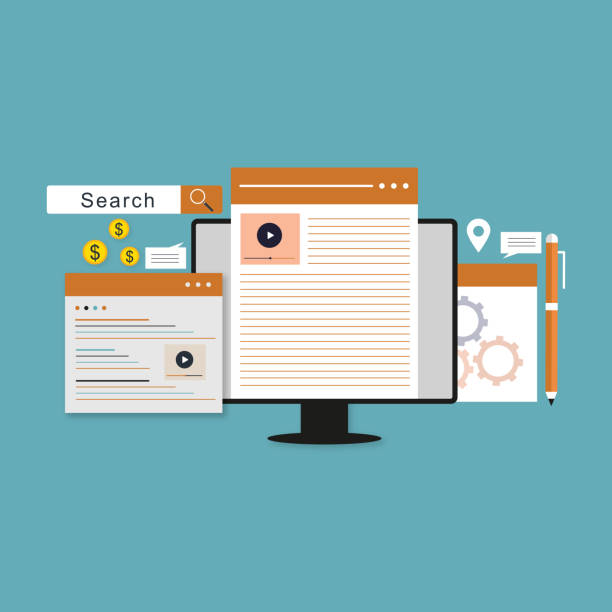
Despite all the advantages of website design with a modern user interface, this field also faces its own #challenges that designers and developers must address.
One of the biggest challenges is the speed of changing technologies and trends.
What is considered modern today may seem obsolete tomorrow.
How can one keep pace with these changes and design a website that maintains its stability and appeal over time? This is a question many design teams grapple with.
Another challenge is maintaining accessibility for all users.
With increasing visual and interactive complexities in modern design, barriers may inadvertently be created for users with disabilities.
For instance, excessive use of heavy animations can be problematic for individuals with epilepsy, or inappropriate color contrast can make reading text difficult for visually impaired individuals.
Balancing advanced aesthetics with adherence to accessibility standards (WCAG) requires high knowledge and precision.
Among the key solutions to address these challenges are continuous training and updating of design and development teams.
Participating in webinars, workshops, and following reputable industry resources helps maintain awareness of the latest trends and best practices.
Furthermore, modular and scalable design helps websites easily add new functionalities and change their appearance in the future without needing a complete code rewrite.
Regarding accessibility, conducting regular accessibility tests and using automated and manual tools to check compliance with standards is crucial.
This analytical and thought-provoking section shows that website design with a modern user interface is not just about aesthetics but about strategic thinking and solving complex problems to provide a comprehensive experience.
Does your current corporate website not reflect your brand’s credibility and power as it should? RasawWeb solves this challenge for you with professional corporate website design.
✅ Increase visitor credibility and trust
✅ Targeted attraction of more customers
⚡ Click to get a free consultation!
The Future of Web Design and Upcoming Trends

The future of #WebDesign, and consequently, website design with a modern user interface, is full of exciting innovations and transformations.
One of the key trends is the increasing use of Artificial Intelligence (AI) and Machine Learning in the design process.
AI-powered tools can assist designers in automating repetitive tasks, suggesting layouts, and even personalizing the user experience based on user behavior.
These advancements pave the way for smarter and more dynamic websites that can automatically adapt to user needs.
Other significant trends include Voice User Interfaces (Voice UI) and interactions based on Virtual Reality (VR) and Augmented Reality (AR).
With the growing popularity of voice assistants like Siri and Alexa, users expect to be able to interact with websites via voice as well.
This creates new challenges in designing information architecture and voice interactions.
Furthermore, integrating VR/AR into web experiences can provide new possibilities for viewing products in 3D or experiencing virtual environments, which will be an exciting development in online shopping and interaction.
Visual trends such as Dark Mode, which has gained significant popularity due to reduced eye strain and battery saving, as well as Neumorphism and Glassmorphism designs, continue to evolve.
These styles, using shadows and transparencies, add depth and a more realistic feel to UI elements.
User experience personalization, through analyzing user data and providing tailored content and suggestions, will also become a standard.
These news and predictions indicate that website design with a modern user interface is constantly changing and evolving, with an exciting future ahead that designers must be ready to embrace and learn.
The Importance of User Testing and Feedback in UI/UX Enhancement

No website design with a modern user interface is complete without thorough #UserTesting and continuous #feedback collection.
Regardless of how deeply a design team understands its users, there are always differences between predictions and actual user behavior.
User testing provides designers and developers with the opportunity to place their product in the hands of real users and observe their reactions, design weaknesses, and opportunities for improvement.
This educational and vital process helps identify navigation problems, visual confusions, and areas where the user experience needs enhancement.
Various methods exist for user testing, including Usability Testing, where users perform specific tasks on the website, and their behavior is observed and recorded.
A/B testing also compares two versions of a page or UI element with the goal of finding the superior version.
Tools like Hotjar and Google Analytics help collect quantitative data (such as click-through rates, bounce rates, time spent on page) and qualitative data (such as heatmaps and user session recordings).
This data provides valuable information for evidence-based decision-making.
Direct feedback from users, through surveys, contact forms, or interviews, also plays a significant role.
This type of feedback can provide deep insights into user feelings and expectations that might not be visible through quantitative data.
By collecting and analyzing this feedback, the design can be improved Iteratively, and problems can be quickly resolved.
The importance of this guiding process is that website design with a modern user interface is not a static process but a continuous cycle of design, implementation, testing, and improvement that is user-centric and ultimately leads to a stronger and more successful product.
Frequently Asked Questions
| Row | Question | Answer |
|---|---|---|
| 1 | What does Modern UI in website design mean? | Modern UI refers to designing websites with a minimalist appearance, extensive use of white space, clear typography, vibrant colors or integrated palettes, subtle animations, and a focus on visual and intuitive User Experience (UX). |
| 2 | What features make a user interface “modern”? | Key features include responsive design, smooth animations, use of vectors and SVG icons, prominent typography, sufficient white space, creative layering, appropriate colors, and a focus on accessibility. |
| 3 | What is the importance of Responsive Design in modern UI? | Responsive design ensures that the website displays correctly on any device (mobile, tablet, desktop) and provides a consistent user experience, which is a fundamental principle of modern UI. |
| 4 | Why is the use of White Space important in modern design? | White space or “negative space” helps text and other elements breathe and be distinguishable, increases readability, enhances user focus on the main content, and creates a clean and professional appearance. |
| 5 | What is the role of animations and micro-interactions in modern UI? | Animations and micro-interactions (small interactions) make the user experience more dynamic and engaging, provide feedback to the user, improve navigation flow, and add a sense of quality and polish to the design. |
| 6 | What is the place of typography in modern website design? | Typography plays a very important role in modern design; appropriate fonts, size, weight, and correct spacing improve readability and can impart a specific feel and character to the brand. |
| 7 | How can visual uniformity be achieved in modern design? | By using a Design System, a limited and specific color palette, consistent typography, reusable UI components, and maintaining uniformity in spacing between elements and visual rhythm. |
| 8 | What is the relationship between User Experience (UX) and modern User Interface (UI)? | User Interface (UI) is the visual and interactive part of a product, while User Experience (UX) relates to the user’s overall feeling when using the product. A modern UI should contribute to improving UX, being functional and intuitive beyond just visual aesthetics. |
| 9 | What are some common trends in modern UI design? | Trends include Dark Mode, Neumorphism, Glassmorphism, large and prominent typography, use of gradients, 3D images, and Lottie animations. |
| 10 | What are the main challenges in designing a website with a modern user interface? | Challenges include maintaining simplicity while innovating, ensuring Accessibility, optimizing loading speed despite heavy animations and images, and balancing aesthetics and functionality. |
And other services of RasawWeb advertising agency in the field of advertising
- Smart Sales Automation: An innovative service to increase website traffic through marketing automation.
- Smart Brand Identity: Professional optimization for customer behavior analysis using SEO-driven content strategy.
- Smart Advertising Campaign: Professional optimization for customer acquisition using key page optimization.
- Smart Content Strategy: An innovative service to increase customer acquisition through custom programming.
- Smart Direct Marketing: An effective tool for increasing sales with the help of marketing automation.
And over hundreds of other services in the field of internet advertising, advertising consultation, and organizational solutions
Internet Advertising | Advertising Strategy | Advertorial
Resources
Modern and User-Friendly Website Design TutorialHow to Design a Modern User Interface?The Importance of UI/UX in Website Design in the Digital AgeResponsive Website Design for Better User Experience
? With RasawWeb Afarin, the digital future of your business is in our hands. We guarantee a powerful and impactful online presence for you by providing comprehensive services in SEO, content marketing, and multilingual website design.
📍 Tehran, Mirdamad Street, next to Bank Markazi, Kazeroun Jonoubi Alley, Ramin Alley, No. 6

